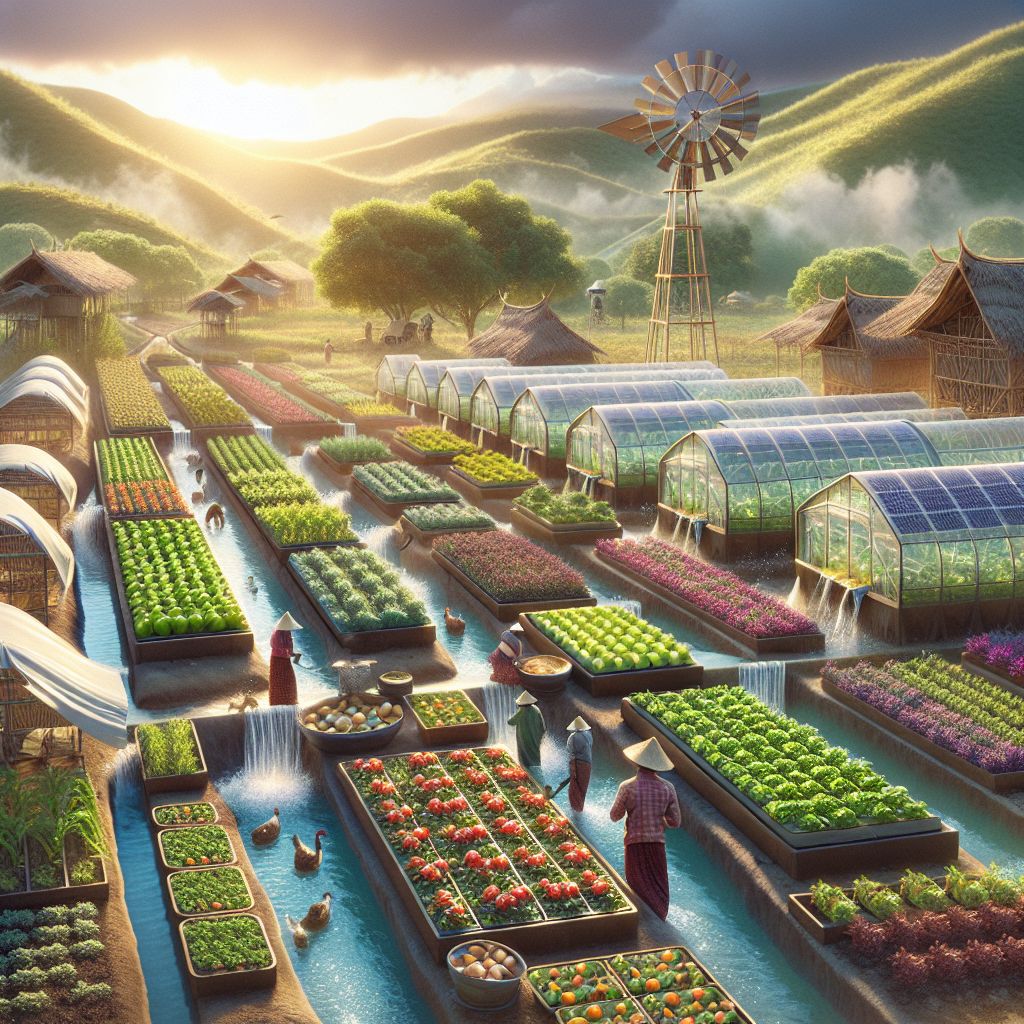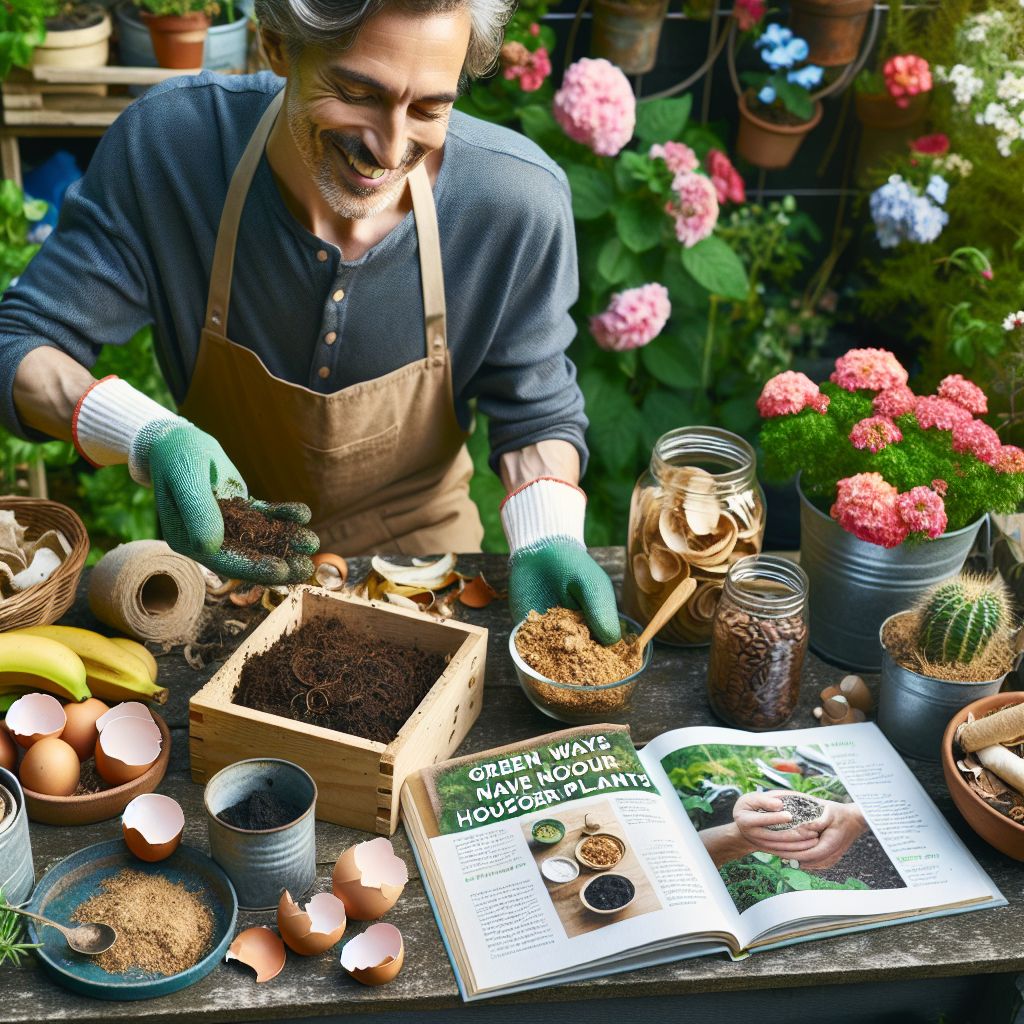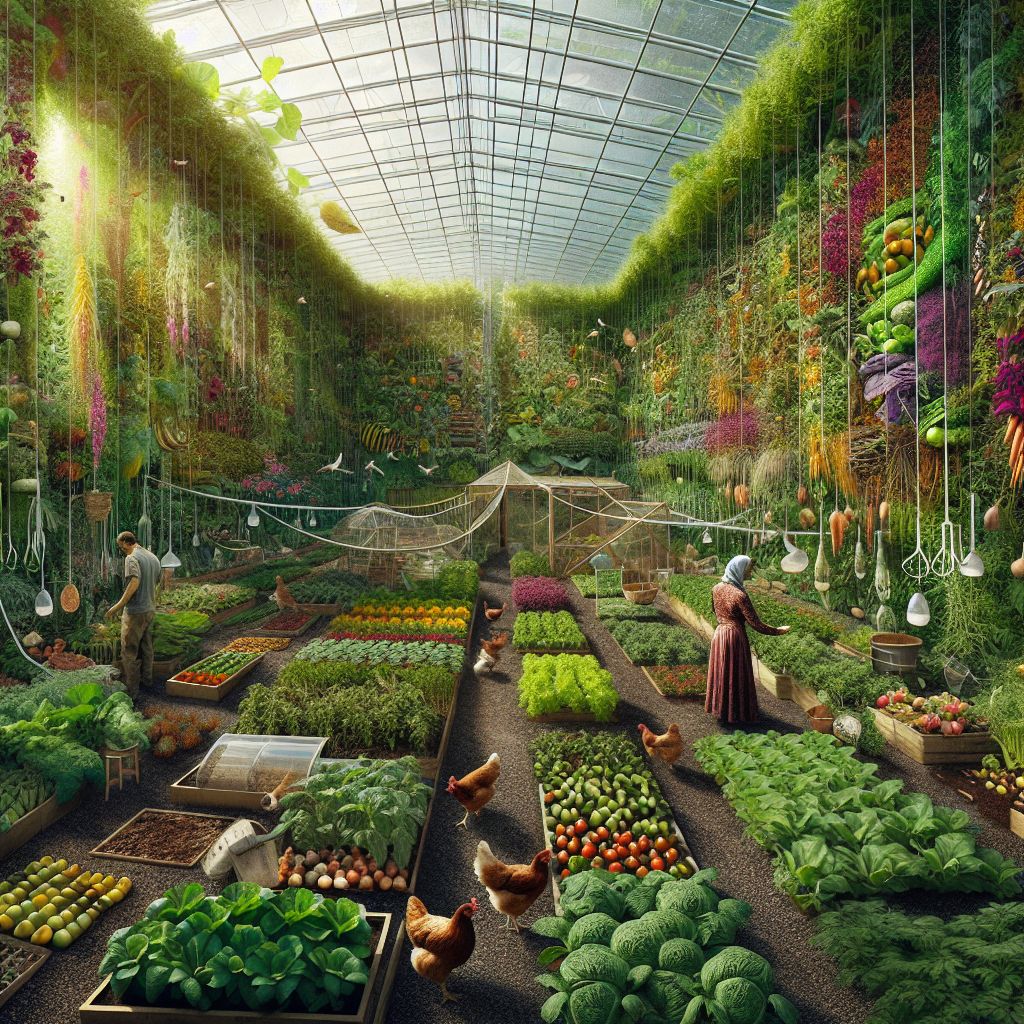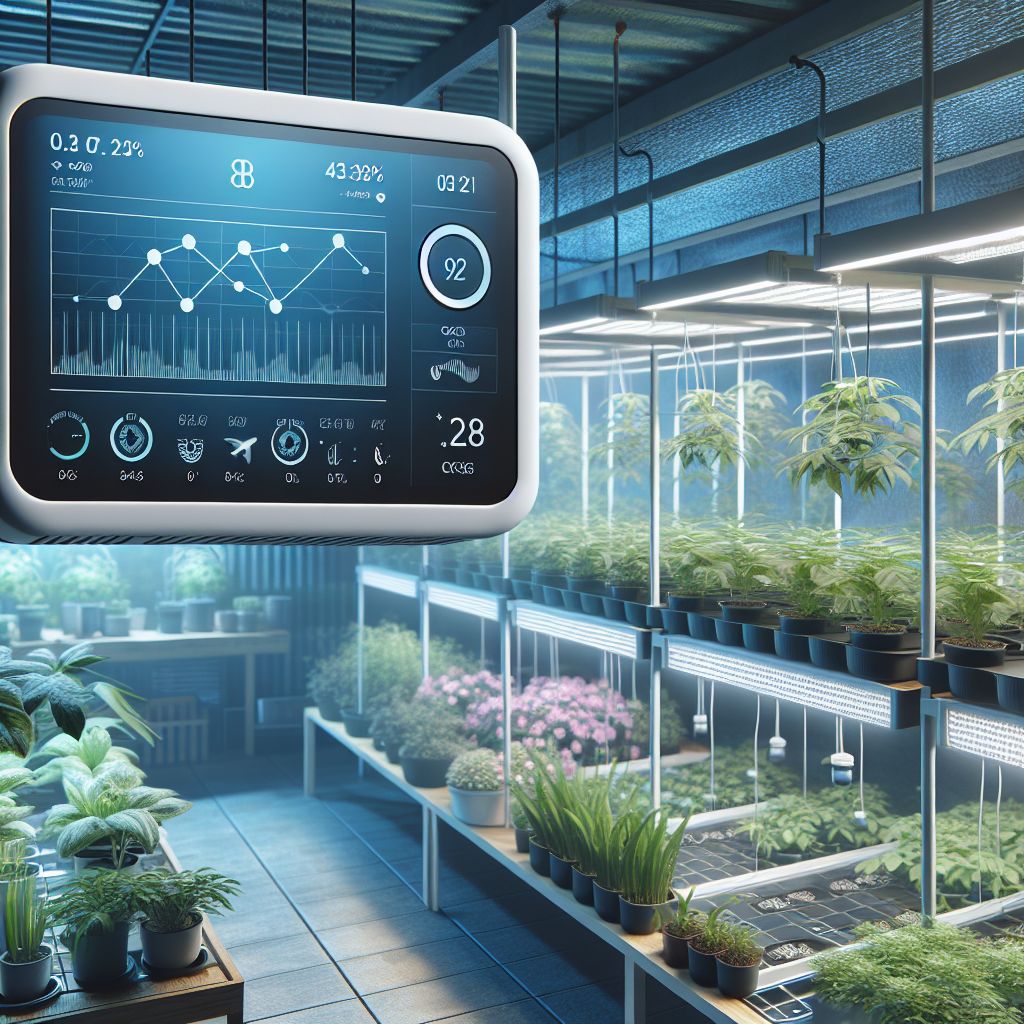Key Takeaways
- It is critical that you understanding the temperature management in greenhouse for your plants needs, growth and health.
- Manual systems offer simplicity and control, while automated systems can save time and effort.
- Passive methods, like using shade cloths or thermal mass, are cost-effective ways to regulate temperature.
- Active systems, such as heaters and cooling systems, provide precise control for optimal plant growth.
- Regular monitoring with the right technology is essential to maintain the perfect greenhouse climate.
Spot-On Strategies for Greenhouse Climate Control
Now, let’s dive into the nitty-gritty of greenhouse temperature management. We’ll start with the basics, then move on to more advanced techniques, ensuring you have all the tools you need to keep your greenhouse at just the right temperature.
Why Precise Temperature Matters
Plants are like Goldilocks, they don’t want it too hot or too cold. The right temperature ensures that your plants can photosynthesize efficiently, absorb nutrients properly, and ultimately, give you the lush growth and bountiful harvest you’re aiming for.
Setting the Ideal Range
Every plant has its comfort zone. For example, tomatoes thrive between 70°F to 80°F during the day and 60°F to 70°F at night. If you’re unsure about your plants` preferences, a quick search or chat with a fellow gardener will set you on the right path.
Manual vs. Automated Systems
Choosing between manual and automated temperature control systems can feel like a big decision. But don’t worry, it’s all about what fits your lifestyle and greenhouse setup best.
Advantages of Going Manual
Manual systems keep you in touch with your plants’ needs. You’ll be opening vents, drawing shades, and maybe even spritzing water by hand. It’s more work, but it also means you’re constantly interacting with your plants, learning their language, and adjusting to their needs on the fly.
When Automation Makes Sense
If you’re often away or prefer a more hands-off approach, automation is your friend. Thermostats can trigger fans, vents, and shades to adjust the temperature without you lifting a finger. It’s about convenience and consistency.
Passive Temperature Adjustment Tactics
Let’s talk about passive tactics. These are the methods that don’t require electricity, just a bit of ingenuity and understanding of how nature works.
Strategic Use of Shade Cloths
On a scorching summer day, shade cloths can be a plant lifesaver. They come in different densities, so you can choose how much light to block out, depending on what your plants need. It’s like putting sunglasses on your greenhouse.
For example, a 30% shade cloth will let most of the light in while keeping the harsh rays off your tender lettuce.
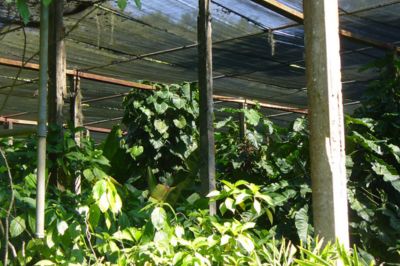
“Aroid shade house 2 | Sitio Burle Marx …” from www.flickr.com
Harnessing Thermal Mass
Thermal mass is a fancy way of saying ‘things that absorb and store heat.’ Water barrels or even rock piles can soak up heat during the day and release it at night, helping to keep the temperature steady. It’s like nature’s thermostat.
Water Walls and Evaporative Cooling
When it’s hot outside, evaporating water can cool the air inside your greenhouse. Water walls, or pads that water runs over, can be installed to make this happen automatically. As the water evaporates, it cools the air, and your plants sigh in relief.
Active Heating and Cooling Solutions
When passive methods aren’t enough, it’s time to bring out the big guns, active heating and cooling systems. These are your heaters, fans, and air conditioners, and they’re all about giving you total control over the greenhouse climate.
The Power of Greenhouse Heaters
During the cooler months, a reliable heater can be the heart of your greenhouse. Gas, electric, or even solar-powered heaters can keep the frost at bay and ensure your plants stay warm and cozy. The key is to distribute the heat evenly, so consider using fans to circulate the warm air.
Remember, it’s better to maintain a steady temperature than to let it drop and try to warm things up again. That’s why a good heater, combined with proper insulation, can be a game-changer.
Innovative Cooling Systems
When the mercury rises, your plants will need a chill pill. That’s where cooling systems come in. Greenhouse-specific air conditioners, or even swamp coolers, can bring down the temperature quickly and efficiently.
But, because these can be pricey to run, it’s smart to use them in combination with passive cooling methods. Think of it as your cooling strategy’s one-two punch.
Combating Humidity with Dehumidifiers
Too much humidity can lead to mold and disease, and nobody wants that. A dehumidifier can help you manage moisture levels, especially during the night when it tends to get muggy. Plus, some dehumidifiers can even recycle the water they collect, giving your plants a drink and saving you a chore.
But, don’t forget to vent out the stale air, too. Good air circulation is just as important as the right temperature and humidity levels.
Monitoring and Control Technology
What gets measured gets managed. That’s why monitoring your greenhouse’s temperature and humidity is vital. Let’s look at the tools that can help you do just that.
For instance, imagine you’re growing orchids, which need a precise environment. A high-quality thermometer and hygrometer can alert you the moment conditions deviate from the ideal, allowing you to act fast and keep your blooms in perfect health.
But, it’s not just about knowing the temperature, it’s about controlling it. That’s where thermostats and climate control systems come into play.
Thermometers and Thermostats
A thermometer tells you the temperature, while a thermostat lets you set it. You’ll want a reliable thermometer that gives you accurate readings. A digital one is usually best, as it can be more precise and easier to read than the old-school mercury ones.
With a thermostat, you can set the exact temperature you want and trust your heating and cooling systems to make it happen. It’s like setting the cruise control on your greenhouse.
The Role of Remote Monitoring
These days, you can keep an eye on your greenhouse from anywhere. Remote monitoring systems let you check temperature and humidity levels using your smartphone or computer. This way, you can be at work or on vacation and still know your plants are doing just fine.
And if something’s off? You can adjust the settings or even turn on equipment right from your phone. It’s like having a remote control for your greenhouse.
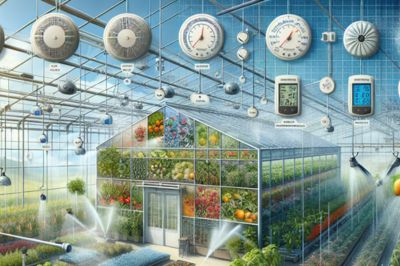
Leveraging Climate Control Software
For those who love tech, climate control software can integrate all your monitoring and adjustment tools into one dashboard. It’s like the command center for your greenhouse, giving you the power to tweak, refine, and perfect the environment for your plants.
Insulation and Ventilation Best Practices
Insulation and ventilation are like the yin and yang of temperature management. They work together to stabilize the climate inside your greenhouse, no matter what’s happening outside.
Good insulation helps retain heat when you need it and keeps the interior cool when you don’t. But insulation isn’t just about the materials, it’s also about where you place them. Make sure your greenhouse has no drafts and that doors and windows are well-sealed.
Effective Insulation Materials
When it comes to materials, you’ve got options. Bubble wrap is a cheap and cheerful way to insulate, while polycarbonate panels are more durable and effective, but also pricier. The right choice depends on your budget and how much temperature fluctuation your plants can handle.
Mastering Ventilation for Stable Temperatures
Ventilation is all about air flow. You want fresh air coming in and stale air going out. Roof vents are great for letting hot air escape, while side vents bring in cooler air. The trick is to create a gentle flow that keeps the air fresh without creating a draft.
Remember, though, that ventilation isn’t just about opening a window. It’s a balancing act. You need to consider the outside temperature, the wind, and even the time of day to get it just right.
Adapting to Seasonal Temperature Variations
As the seasons change, so should your temperature management strategy. What works in the heat of summer won’t cut it when the chill of winter rolls in.
Transitioning Your Approach for Summer
In summer, your focus is on cooling. This means shade cloths, ventilation, and maybe even a cooling system for those really hot days. It’s all about protecting your plants from overheating and making sure they have enough water to stay hydrated.
Winterproofing Your Greenhouse
When winter arrives, it’s time to switch gears. Insulation becomes your best friend, along with a reliable heater. You might also want to consider using a thermal mass to help store heat during the day and release it at night.
But, don’t forget about the sunlight. Even in winter, a sunny day can heat up a greenhouse quickly. So, you might still need to vent occasionally to prevent overheating.
ROI: Analyzing the Impact on Plant Yield and Costs
One of the most compelling reasons to optimize your greenhouse temperature is the return on investment (ROI). The right temperature management can lead to healthier plants and higher yields, which means more produce to sell or enjoy. But let’s not gloss over the costs, investing in temperature control systems, whether passive or active, comes with an upfront price tag.
However, the increased productivity and reduced plant loss often outweigh these initial costs. For instance, investing in a good quality shade cloth might set you back a bit, but it can boost your lettuce production by protecting the plants from harsh sun. In the long run, the cloth pays for itself with the extra heads of lettuce you’ll harvest.
Maximizing Plant Health and Productivity
Healthier plants not only look better, but they’re also more productive. By keeping the temperature within an optimal range, you reduce stress on the plants, which can lead to larger fruits, more vibrant flowers, and overall, a more robust garden. This isn’t just good for your plants, it’s good for your peace of mind as well.
Assessing the Investment in Temperature Solutions
So, how do you decide what’s worth your money? Start by considering the needs of your plants and the climate challenges you face. If you live in a region with extreme weather, a more sophisticated system might be necessary. But if your climate is mild, simpler and less expensive methods could be just as effective.
And there you have it. With these methods and solutions, you’re well on your way to mastering temperature management in your greenhouse. Remember, it’s all about understanding what your plants need and creating the perfect environment for them to thrive. Happy gardening!
FAQ on Temperature Management in Greenhouse
Now, let’s tackle some frequently asked questions about greenhouse temperature management. This will help clear up any lingering doubts and give you the confidence to take control of your greenhouse climate.
What is the Ideal Temperature Range for a Greenhouse?
The ideal temperature range varies depending on what you’re growing, but most plants do well with daytime temperatures between 70°F and 80°F, and nighttime temperatures between 60°F and 70°F. Always research the specific needs of your plants to find their perfect temperature sweet spot.
How Can I Lower Greenhouse Temperature in Summer?
In the heat of summer, use shade cloths, ventilation, and evaporative cooling to keep temperatures down. You can also paint the greenhouse white to reflect sunlight or use a fan to increase air circulation. It’s all about keeping the hot air moving and providing shade where needed.
What Are the Most Cost-Effective Ways to Heat a Greenhouse?
For heating on a budget, consider passive solar heat with thermal mass, like water barrels or rock beds. Composting inside the greenhouse can also generate heat. If you’re using active heating, a small, efficient electric heater with a thermostat can be cost-effective for smaller spaces.
Is It Worth Investing in Automated Climate Control Systems?
If you’re serious about gardening and want to save time and hassle, an automated system can be a worthy investment. It can help you maintain consistent conditions, which is crucial for plant health and yield. Plus, the convenience factor is hard to beat.
Can I Use Greenhouse Temperature Control Methods for Any Plant Type?
Yes, but you’ll need to tailor your approach to the needs of your specific plants. Some plants, like cacti, need higher temperatures, while others, like ferns, prefer it cooler. Understanding your plants’ needs is key to choosing the right temperature control methods.
By now, you should feel equipped to take on the challenge of managing your greenhouse temperature. Whether you opt for manual adjustments or high-tech solutions, the important thing is to keep learning and adapting. Your plants will thank you for it, and you’ll see the fruits of your labor in no time. Happy gardening!


